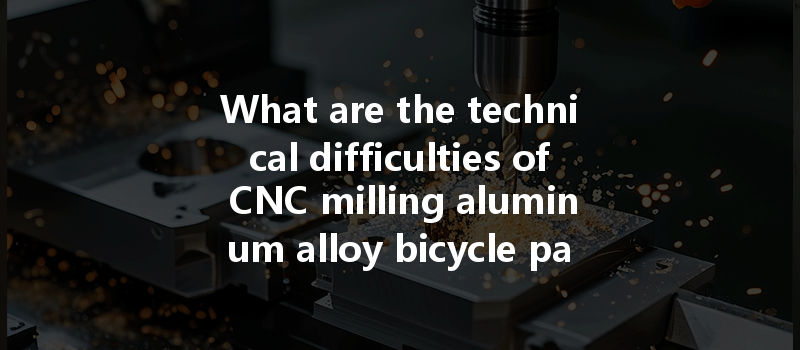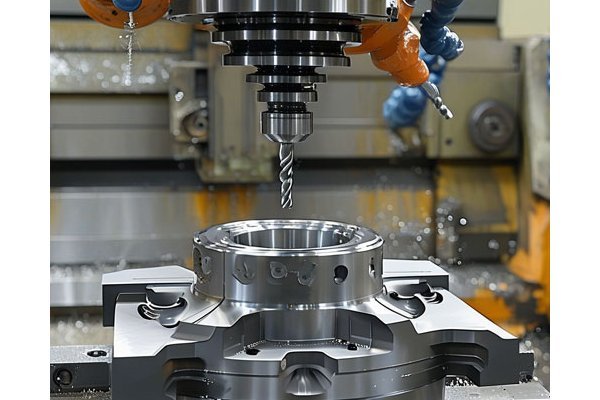Did you know that the bicycle industry is increasingly turning to advanced manufacturing techniques, with a notable 25% of all bicycles now being made with aluminum alloys? As bicycle manufacturers strive for lightweight yet robust components, the demand for precision machining has surged. Enter CNC milling—Computer Numerical Control milling is at the forefront of this revolution. However, while CNC machining offers remarkable benefits, it does not come without its challenges, especially when working with aluminum alloy bicycle parts.
Understanding the Challenges in CNC Milling Aluminum Alloys
CNC milling of aluminum alloy components can present a range of technical difficulties that require specialized knowledge, experience, and appropriate technology to overcome. Below are some significant challenges faced in the CNC milling process of aluminum alloy bicycle parts:
Aluminum alloys can vary significantly in their mechanical properties, including tensile strength, ductility, and thermal conductivity. For instance, 6061 aluminum is known for its good corrosion resistance and weldability but exhibits lower strength compared to other alloys like 7075, known for its high strength but lower corrosion resistance. Understanding the specific properties of the alloy being used is crucial for effective machining.
The wear of cutting tools is a common problem in CNC milling, particularly with softer materials like aluminum. Tool wear can lead to poor surface finishes and dimensional inaccuracies. Factors like feed rate, cutting speed, and tool geometry play a vital role in how quickly tools wear. Using the appropriate tool material, such as carbide or high-speed steel, and regularly monitoring tool performance can help mitigate this issue.
The milling process generates heat, which can negatively affect both the tool and the workpiece. High temperatures can lead to thermal expansion, resulting in warping or dimensional changes in aluminum parts, especially thin-walled structures. Incorporating coolant systems or optimizing feed rates and speeds can help keep temperatures in check, ensuring precision in the final machined product.
Efficient chip removal is critical during the CNC milling process. Poor chip removal can lead to workpiece contamination and could even force the tool into re-cutting previously machined surfaces, adversely affecting surface finish and dimensional accuracy. Utilizing appropriate cutting fluids and designing effective chip evacuation systems can assist in maintaining cleanliness during machining.
Aluminum alloy bicycle parts often require intricate designs, such as complex frames with precise joinery. CNC milling can accommodate these designs, but achieving the required tolerances and surface finish presents challenges. Proper programming of the CNC machine is essential, as is using the right tool path strategies. Advanced CAM (Computer-Aided Manufacturing) software can assist in optimizing tool paths for complex geometries, improving both efficiency and accuracy.
During the milling process, the proper setup and fixturing of parts are crucial for maintaining accuracy. Poorly designed fixtures can lead to vibrations or shifting during machining, compromising the final part’s precision. Designing effective fixtures specific to the part being machined can minimize these issues, allowing for secure positioning and reduced deformation during the process.

Achieving a high-quality surface finish is vital for bicycle components, not only for aesthetics but also for performance and wear resistance. Factors such as feed rate, cutting speed, and tool engagement can greatly affect surface finish. Employing finishing passes, using appropriate cutting tools, and optimizing the toolpath can help enhance the surface finish of machined parts.
Ensuring that parts meet specified tolerances and quality standards requires thorough inspection and testing. Advanced measurement technologies, such as Coordinate Measuring Machines (CMM) or laser scanning, should be integrated into the process to validate dimensions and surface integrity. Marking and tracking parts throughout the process can assist in catching defects early on, ensuring higher overall quality.
Solutions and Best Practices
To address these challenges, here are some actionable solutions and best practices that manufacturers can adopt:
CNC milling of aluminum alloy bicycle parts offers numerous benefits, namely reducing weight while maintaining strength. However, manufacturers must navigate a series of challenges that, if ignored, could impact the final product’s quality and performance. By understanding the intricate properties of aluminum alloys, optimizing tooling and processes, and incorporating quality assurance measures, companies can overcome these difficulties effectively.
As the bicycle industry continues to innovate and evolve, addressing these technical challenges through CNC milling becomes increasingly critical. The ability to produce lightweight, high-performance parts dictates competitiveness in the market. Manufacturers who prioritize understanding and mastering these complexities are well-positioned to lead in this dynamic landscape, ultimately contributing to more efficient, durable, and aesthetically pleasing bicycle components.
This blog serves as a critical reminder of the importance of technical knowledge and best practices in CNC milling for aluminum alloy bicycles. It is essential for industry professionals to remain informed and adaptable to the ever-evolving manufacturing landscape. To stay competitive, adopting innovative strategies while remaining aware of the challenges in the machining process is not just beneficial—it’s imperative.






